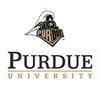Explore all the information on
Poultry nutrition - Other additives
Alternative feed additives have promising importance in broiler production due to the ban on the use of certain antibiotics. The most used antibiotic alternatives in broiler production are phytogenics, organic acids, prebiotics, probiotics, enzymes, and their derivatives. Antibiotic alternatives have been reported to increase feed intake, stimulate digestion, improve feed efficiency, increase growth performance, and reduce the incidence of diseases by modulating the intestinal microbiota and immune system, inhibiting pathogens, and improving intestinal integrity. Simply, the gut microbiota is the target to raise the health benefits and growth-promoting effects of feed additives on broilers. Therefore, naturally available feed additives are promising antibiotic alternatives for broilers.
The APIs market in November generally remained stable, continuing the lingering trend since August. Supply-side costs are rising, while deals are constrained by downstream demand. Downstream purchases are still subject to the actual need, and there needs more confidence and willingness to stock up and build the position. The supply-demand game has been held this month. It is expected that the recent market trend will continue oscillation and consolidation and need a solid new factor to break...
Comments : 0
Recommendations: 0
Monir ElEdrissi, Regional Director Middle East & Africa, speaks about the benefits of products and solutions Adisseo offers in the market...
Comments : 0
Recommendations: 1
Clara Berger, Strategic customer manager at Phileo by Lesaffre, gives her overview on a reference selenium-enriched yeast Selsaf 3000 with additional benefits beyond efficacy and safety in three different ways: people, profit, and planet.
...
Comments : 0
Recommendations: 2
With a rich history built on more than a century of poultry domestication and study, the modern poultry industry continues to expand its knowledge and mastery of avian care and finding innovative areas of research that help increase the overall success of the industry. These research developments and related topics will be discussed at the International Poultry Scientific Forum (IPSF), held in conjunction with the 2023 International Production & Processing Expo (IPPE) in...
Comments : 0
Recommendations: 0
INTRODUCTION Footpad dermatitis (FPD) is present in many different types of broiler production systems. In 1 study, Pagazaurtundua and Warriss (2006) estimated prevalence of FPD ranged from 9.6 to 98.1% depending on the housing system used. This common issue has a large impact on growers because the presence of FPD is associated with decreased live weight and leg meat yield and increased carcass condemnations (Hashimoto et al., 2013). These condemnations can have a massive...
Comments : 1
Recommendations: 0
Sebastian Decap (Plantae Labs) comments on restrictions and alternatives to control Coccidiosis, during the Symposium on Gut Health in St. Louis, USA....
Comments : 1
Recommendations: 0
Sebastián Decap (Plantae Labs) talks about Necrotic Enteritis and his research results on possible natural solutions involving Quillaja extract, during the Symposium on Gut Health in St. Louis, USA....
Comments : 0
Recommendations: 0
Chengbo Yang (University of Manitoba) speaks on antimicrobial alternatives, during the Symposium on Gut Health in St. Louis, USA....
Comments : 0
Recommendations: 3


Overview of Performance of Listed Vitamin Companies in 2023
Suggested link
Andrea Bonetti (University of Bologna) talks about this nutritional supplement and its effect on intestinal integrity, during the Symposium on Gut Health in St. Louis, USA....
Comments : 0
Recommendations: 0
Federico Ghiselli (University of Bologna) discusses his research on a blend of thymol, carvacrol, and saponins, as well as alternatives to anticoccidials, during the Symposium on Gut Health in St. Louis, USA....
Comments : 0
Recommendations: 0


Bacillus amyloliquefaciens CECT 5940 (Ecobiol®) expresses quorum quenching activity
Suggested link
...
Comments : 3
Recommendations: 1
A few years back, it was discovered that in-feed coniferous resin acids support gut integrity and luminal homeostasis in the intestinal mucosa of broiler chickens by reducing inflammation-associated degradation of collagen. This very positive, direct effect on intestinal tissue manifests as improved bird performance and reduced abundance of inflammatory T-cells in gut mucosa. Such a mechanism-of-action has not been discovered for any other feed ingredient or natural feed...
Comments : 0
Recommendations: 2
(This paper was presented at AFMA’s annual symposium on 11 October 2006). Soybeans and its by-products, Soybean Oil and Soybean meal continue to maintain a pace of increased production due to worldwide demand. The USDA World Agricultural Supply and Demand report for September 2006 states that…”for 2005/2006 strong demand for soybeans and soybean meal raises exports and crush and lowers ending stocks”. Expectations for this year’s soybean crop are in the order of 83...
Comments : 8
Recommendations: 1
Studies in the past decade have shown that Cordyceps militaris has multiple pharmacological functions, including anti-oxidant, anti-inflammatory, antimicrobial, anti-tumor, and anti-angiogenic activities and immunopotentiation ability. The chemical structure of cordycepin is similar to that of adenosine. Cordycepin can be used as a nucleotide during RNA synthesis, which leads to premature termination of chain elongation because of the absence of oxygen in the 3′...
Comments : 0
Recommendations: 1
Over the last twenty years in India, there has been remarkable growth in poultry industry (Ali 2015). However, in cold arid part of the Himalayas, the picture is very different as environmental conditions in this region are characterized by extreme temperature variations (from +35°C to –35°C), hypobaric hypoxia, high UV radiations, low humidity, and scarcity of fodders which affects livestock nutritional status and their health in this region (Biswas et al. 2011, Kalia et al....
Comments : 0
Recommendations: 0
Introduction The livestock industry has undergone many changes aimed at the production of safe products, considering mainly the health of the consumer, thus strongly affecting the area of animal feeding for its impact on the productive, economic and social parameters and at the same time addressing the current tendency to cause the least possible impact on the environment (Montossi et al., 2013; Fajersson, 2015). In the search for natural alternatives for the management of...
Comments : 0
Recommendations: 0
Necrotic enteritis (NE) is an enteric disease of poultry caused mainly by a spore-forming grampositive bacterium, Clostridium perfringens, resulting in decreased growth, high mortality, and increased veterinary costs (Wade and Keyburn, 2015). While supplementing poultry diets with antibiotics can control NE, emerging antibiotic-resistant microbes and transfer of such resistance factors into human medicine have resulted in restriction or ban of antibiotic usage across the world. Inclusion of...
Comments : 0
Recommendations: 0
Following on from the success of the Research Topic “Alternatives to Antimicrobial Growth Promoters and their impact in Gut Microbiota, Health and Disease”, we are pleased to launch Volume II.
Over a century ago Eli Metchnikoff (1907) proposed the revolutionary idea of consuming viable bacteria to promote health by modulating the intestinal microbiota. The idea is more applicable now than ever since bacterial antimicrobial resistance has become a serious worldwide problem...
Comments : 0
Recommendations: 0
Digitize is one of the current “buzzwords” in the animal production industry. But, as with other such terms, it can mean different things to different people. “Digitize” is defined as: “to change something such as a document to a digital form (a form that can be stored and read by computers)” – Cambridge Dictionary Merely making records available in a form that can be accessed via a computer is not enough. What we really need is to...
Comments : 0
Recommendations: 4
About 50-70% of all antibacterial agents used in broiler production are applied to reduce bacterial intestinal infections (bacterial enteritis). Properly conducted prophylaxis and appropriate follow-up can be effective methods of reducing the amount of antibiotics that are used in poultry production. Impaired feed digestion and nutrient absorption lead to the development of indigestion and diarrhoea in poultry. These diseases, apart from subclinical coccidiosis, have the...
Comments : 0
Recommendations: 3
.jpg&w=3840&q=75)
















.jpg&w=3840&q=75)














